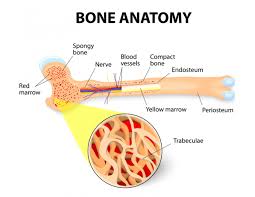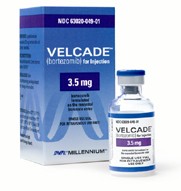
Recently Diagnosed or Relapsed? Stop Looking For a Miracle Cure, and Use Evidence-Based Therapies To Enhance Your Treatment and Prolong Your Remission
Multiple Myeloma an incurable disease, but I have spent the last 25 years in remission using a blend of conventional oncology and evidence-based nutrition, supplementation, and lifestyle therapies from peer-reviewed studies that your oncologist probably hasn't told you about.
Click the orange button to the right to learn more about what you can start doing today.
- You are here:
- Home »
- Blog »
- Multiple Myeloma »
- Myeloma Chemo – Arsenic trioxide/ Vel/ Vit. C/ Dex.?
Myeloma Chemo – Arsenic trioxide/ Vel/ Vit. C/ Dex.?

“Compared to bortezomib/dexamethasone (BD) regimen, arsenic trioxide/bortezomib/ascorbic acid/dexamethasone (ABCD) regimen significantly improved PFS and OS in newly diagnosed patients.”
If you’ve been diagnosed with multiple myeloma (MM) and you’re considering what MM chemotherapy to do first (induction therapy), please focus on the words “significantly improved PFS and OS in newly diagnosed patients.” According to the study linked below ABCD out-performs BD as induction therapy for newly diagnosed MM patients.
Let me explain.
The three most important aspects of the study below and therefore of ABCD induction therapy is:
- ABCD therapy worked well for “high-risk” MM patients-
- ABCD therapy worked well for MM patients who where diagnosed at a more advanced stage (II oe III)-
- ABCD therapy saw almost 75% of patients achieve very good partial remission (VGPR) or better. This means that patients undergo an induction therapy that is tolerable while at the same time, the MM patients experience a significant response.
To be clear, if a person is diagnosed with multiple myeloma at a stage II or stage III, they face a tougher road. My this I mean they may have more tumor burden, more bone involvement, etc. In my experience, people diagnosed at stage II or III must undergo toxic therapy in an effort to stabilize your MM.
Both ABCD and BD include velcade (the B is for Bortezomib aka velcade). I’ve always believed that conventional oncology exposes newly diagnosed MM patients to too much toxicity. Based on the study below, ABCD induction therapy moderates the toxicity that MM patients are exposed to.
Curcumin has been shown to synergize with velcade.
My point is that multiple myeloma is considered to be an incurable blood cancer by conventional oncology. If you narrow your treatment focus to include only conventional therapies, you will relapse, reach multi-drug resistance, end-stage and die.
I believe the newly diagnosed MM patient’s best bet is to combine the best of evidence-based, conventional and non-conventional therapies. ABCD is an example of this.
To Learn More about intravenous vitamin C therapy and Myeloma- click now
If you would like to learn more about multiple myeloma, scroll down the page, post a question or comment and I will reply to you ASAP.
Hang in there,
David Emerson
- MM Survivor
- MM Coach
- Director PeopleBeatingCancer
Recommended Reading:
- Multiple Myeloma Therapy- Vitamin K2 Pro Bone, Anti-Myeloma
- Multiple Myeloma Chemotherapy- “RVd Lite” Better Than Heavy-dose RVd?
- Multiple Myeloma Side Effects- Secondary Cancers
Efficiency and Tolerability of Induction and Consolidation Therapy with Arsenic Trioxide/Bortezomib/Ascorbic Acid/Dexamethasone (ABCD) Regimen Compared to Bortezomib/Dexamethasone (BD) Regimen in Newly Diagnosed Myeloma Patients
“Purpose: This study was aimed at comparing the efficacy and tolerability of an arsenic trioxide/bortezomib/ascorbic acid/dexamethasone (ABCD) regimen with efficacy and tolerability of a bortezomib/dexamethasone (BD) regimen in patients with newly diagnosed myeloma.
Patients and Methods: Fifty-seven and sixty-four patients were treated with the ABCD and BD regimens, respectively. Eligible and agreeable patients received autologous hematopoietic stem cell transplantation followed by consolidation.
Results: The response rates (above VGPR) were 74.1% and 32.8% in the ABCD- and BD-treated groups, respectively.
Compared to BD regimen, ABCD regimen significantly improved PFS and OS in newly diagnosed patients.
Patients with a high tumor burden, low or standard risk, and without auto-HSCT seemed to especially benefit compared to the same group with BD regimen.
ABCD also showed better tolerability with lower bone marrow suppression. Furthermore, complete response or near CR after induction therapy was a good prognostic factor for ABCD-associated OS and PFS.
Conclusion: ABCD is an effective and tolerable regimen compared with BD regimen in newly diagnosed myeloma patients. ABCD regimen could be an economical, effective, and tolerable choice in low- and standard-risk patients.
Preclinical studies have also shown that ATO combined with bortezomib at low concentrations has synergistic antiproliferative and antimyeloma activity in xenograft animal models,17 suggesting the combination may have the potential to treat MM.
Phase I/II trials of ATO and bortezomib have been conducted in heavy pretreatment, relapsed or refractory MM patients, while the addition of ATO has limited success in relapsed/refractory MM.20…
Safety and Tolerability of ABCD regimen
The ABCD combination therapy was well tolerated by most patients. The adverse effects and their frequencies are listed in Table 5. All adverse effects can be handled and controlled by proper treatment, and none of the patients died of the adverse effects.
The BD group showed a higher incidence of neutropenia or thrombocytopenia than the ABCD group (n = 2 vs n = 10, P = 0.026), while the ABCD group showed a higher incidence of cardiac complications such as cardiac arrhythmia (n = 8 vs n = 0, P = 0.002) and limb edema (n = 5 vs n = 0, P = 0.016) than the BD group.
The incidence of other adverse effects such as neuropathy, diarrhea, constipation, infection, and electrolyte imbalance did not show a significant difference…
Patients showing a better response (those who achieved CR and nCR after induction therapy) to the treatment seemed to have longer OS and PFS in this study.
There is another very interesting phenomenon, females become an independent prognostic factor in ABCD regimen for better OS. Previous study showed physiological levels of androgens can induce oxidative stress (manifested as lower glutathione levels) that could result partially from increased mitochondrial activity.30
In human kidney, CBS (precursor of glutathione) activity is 35% higher in women than in men.31 As we know, the mechanism of ascorbic acid and arsenic was just dependent on glutathione and ROS activity, whether there was any correlation, we do not know now, but the mechanism of this regimen needs to be further studied and the effect of this regimen needs to be validated in an open, multicenter, randomized clinical trial in the future…”


